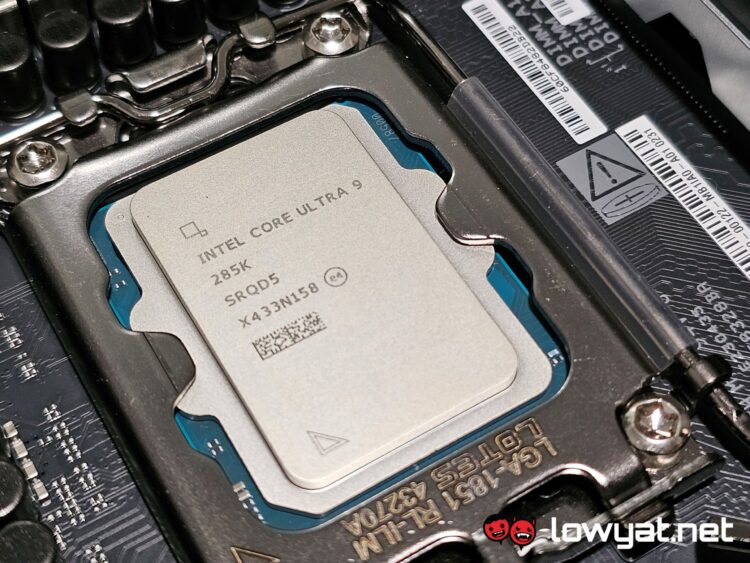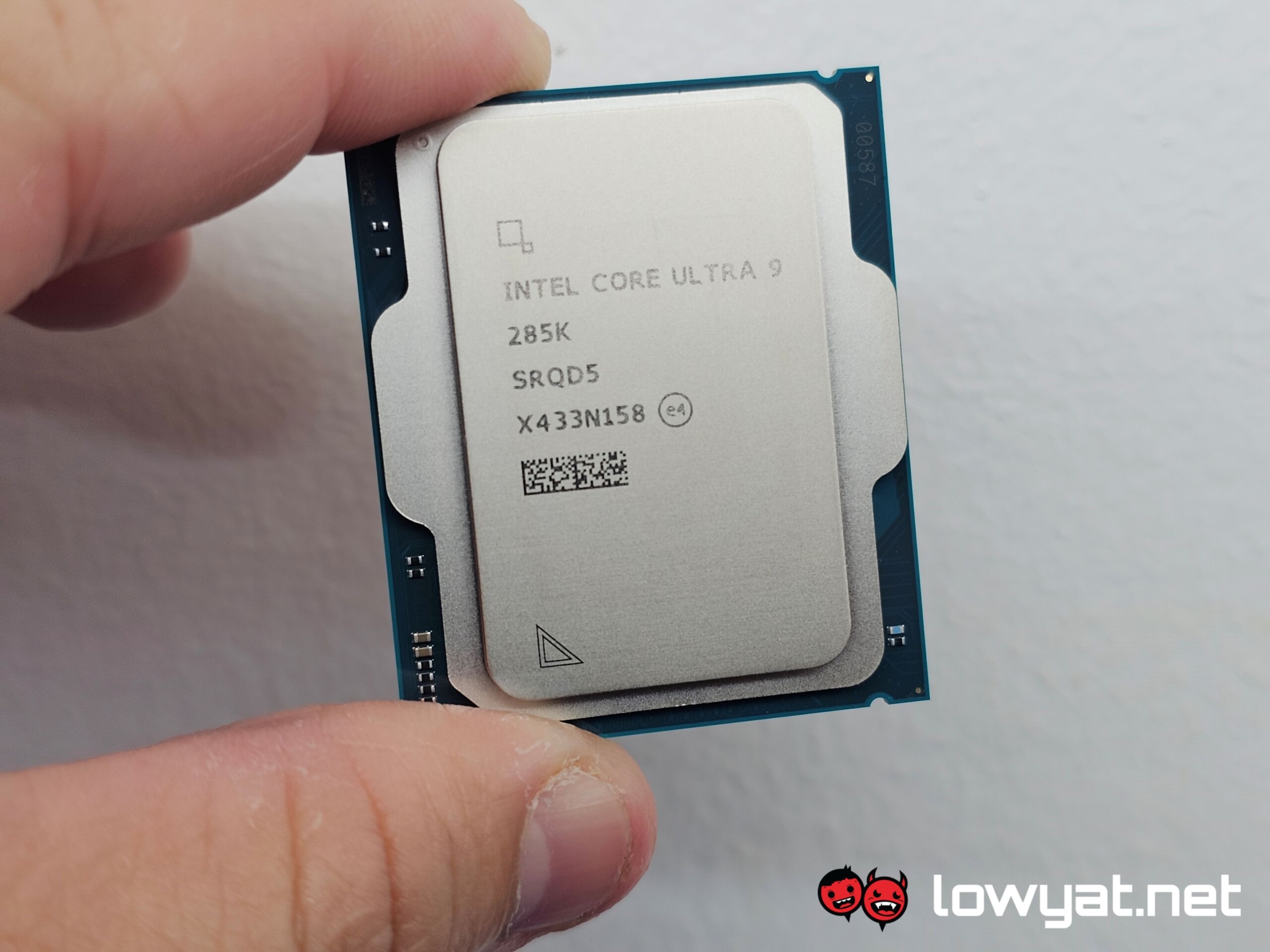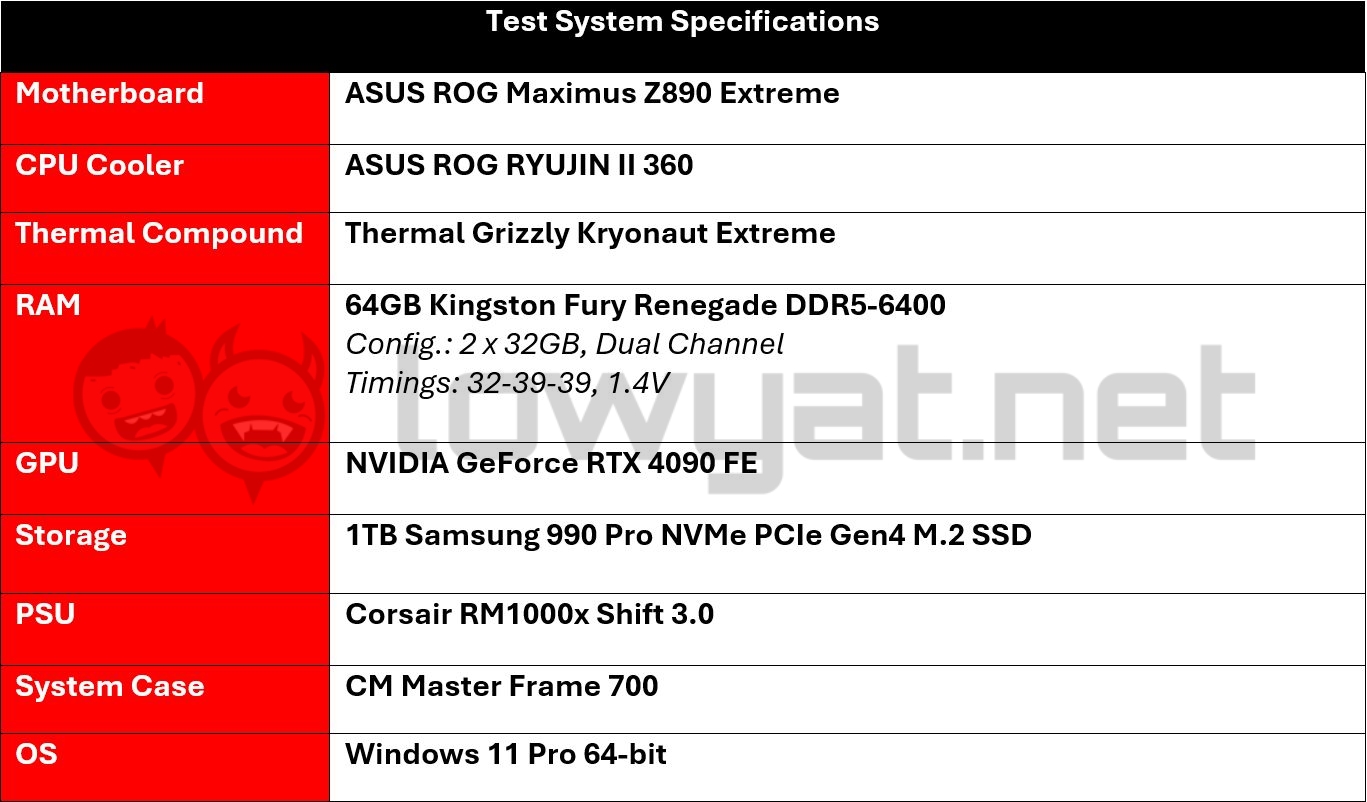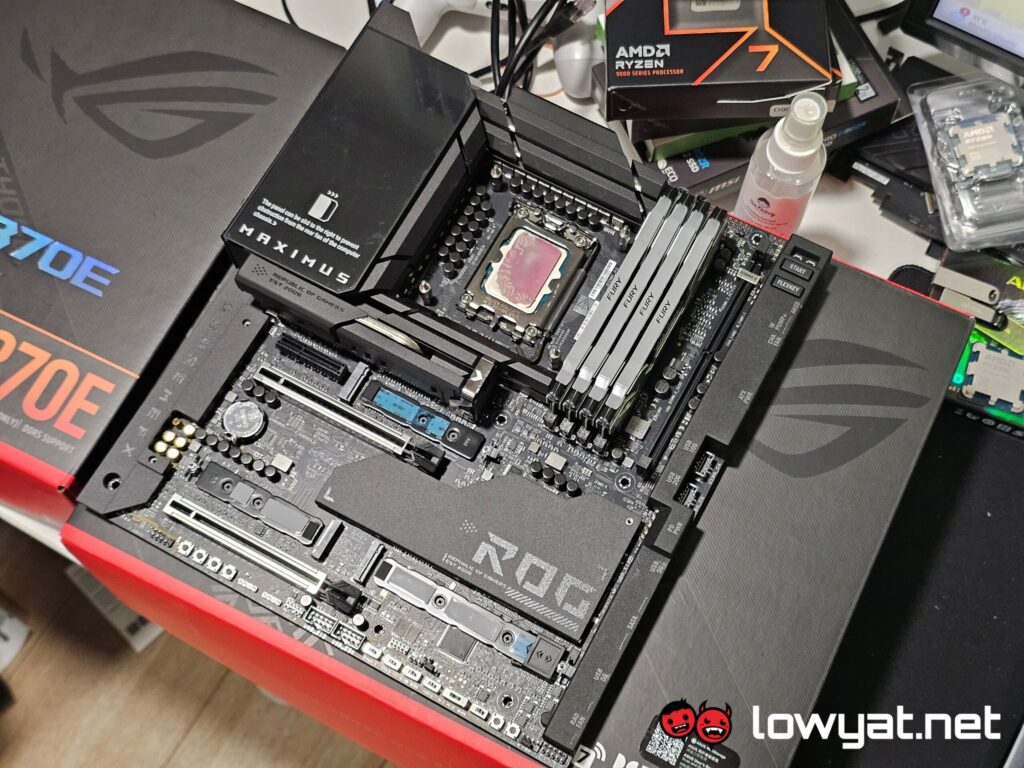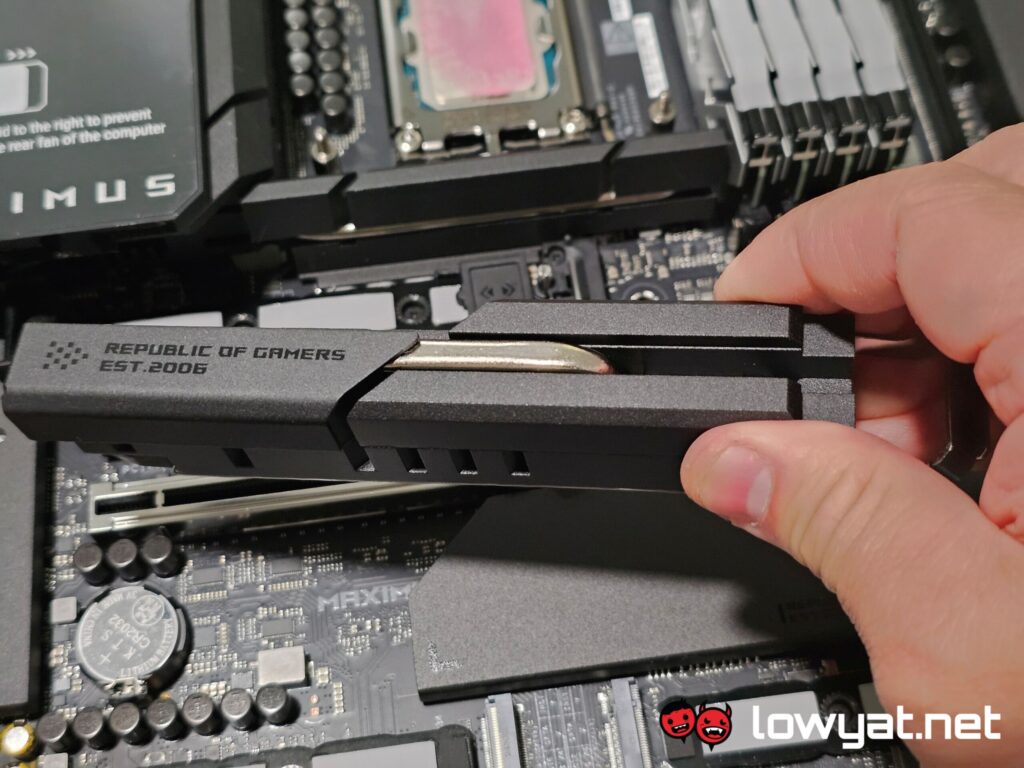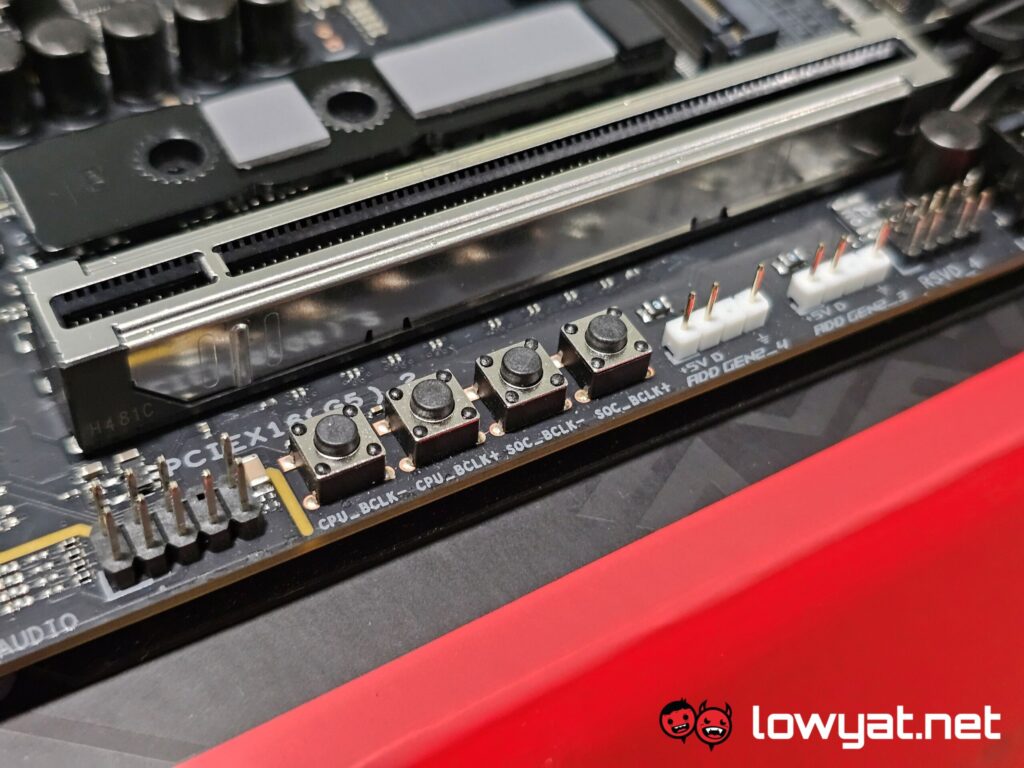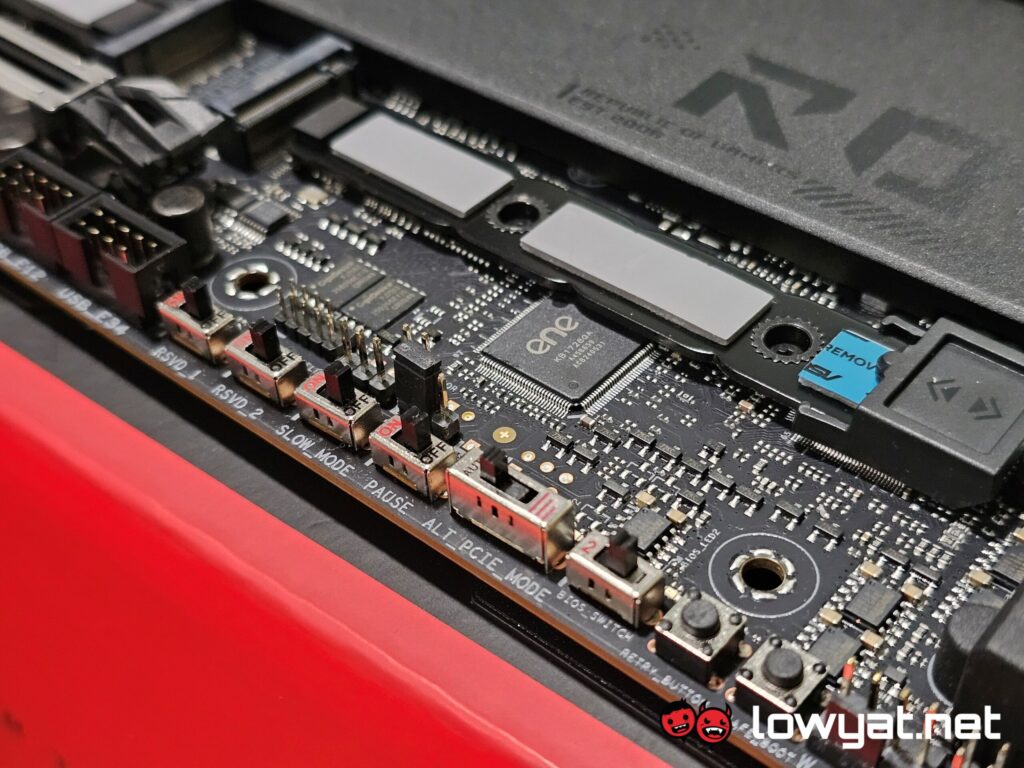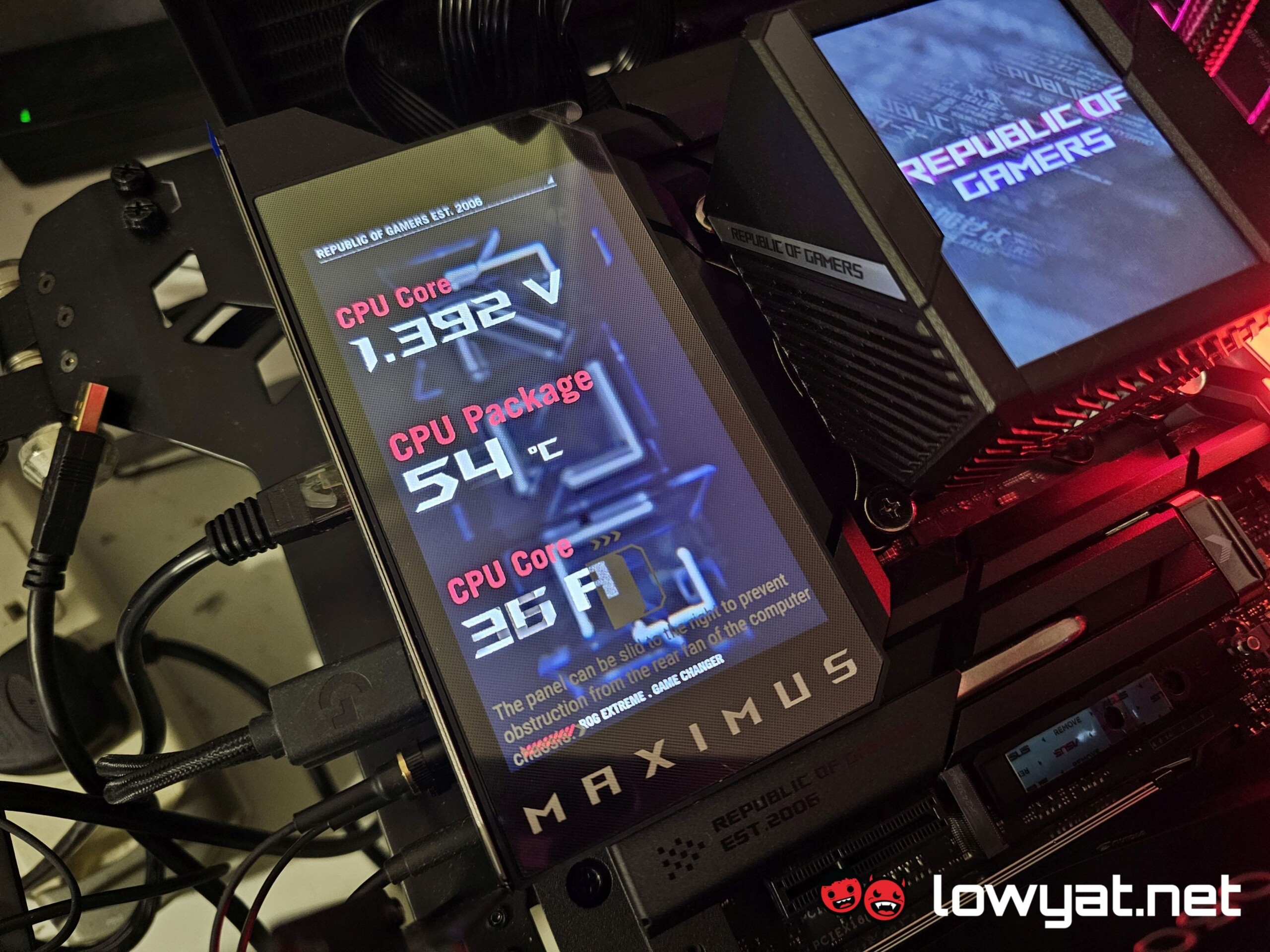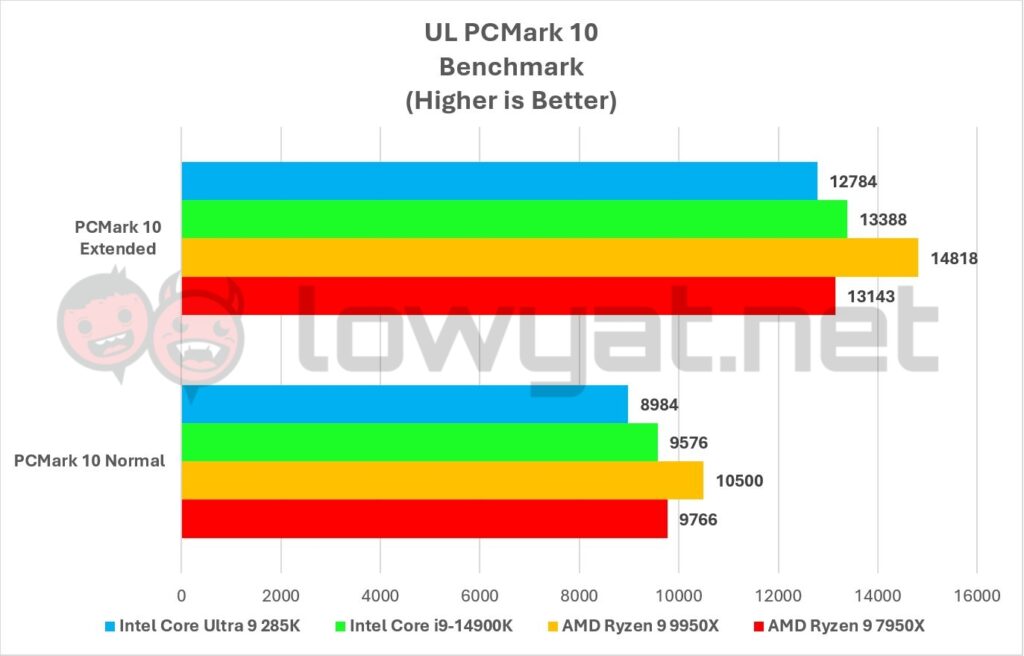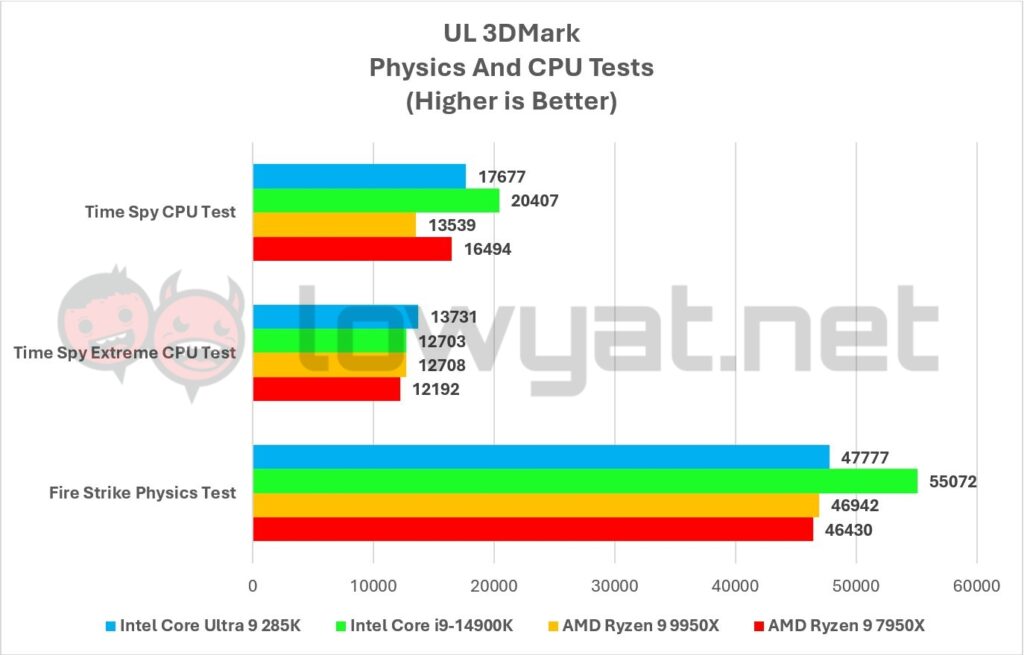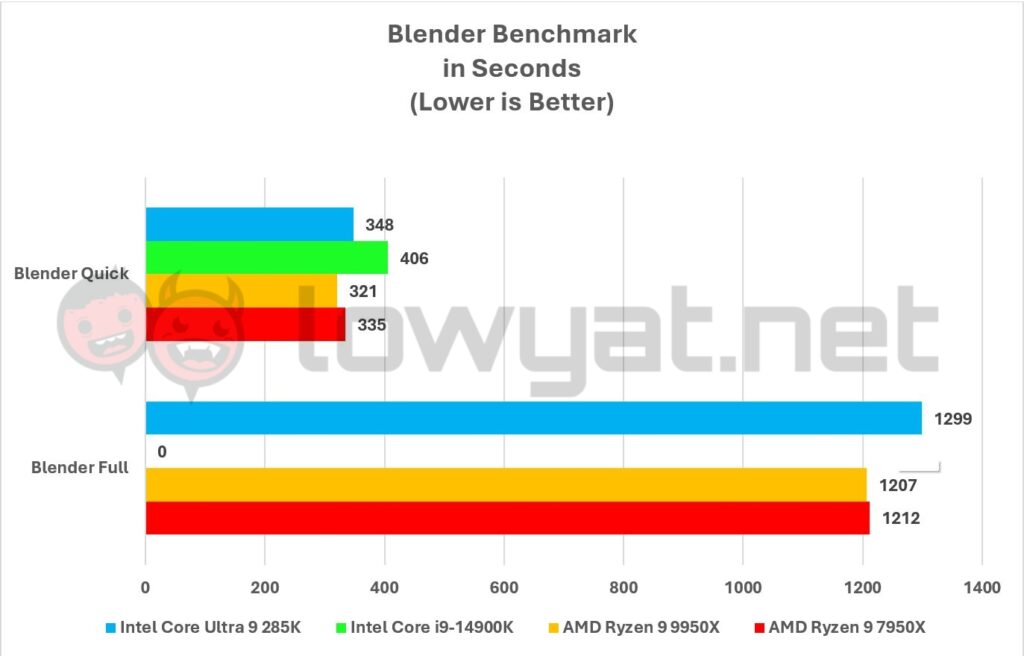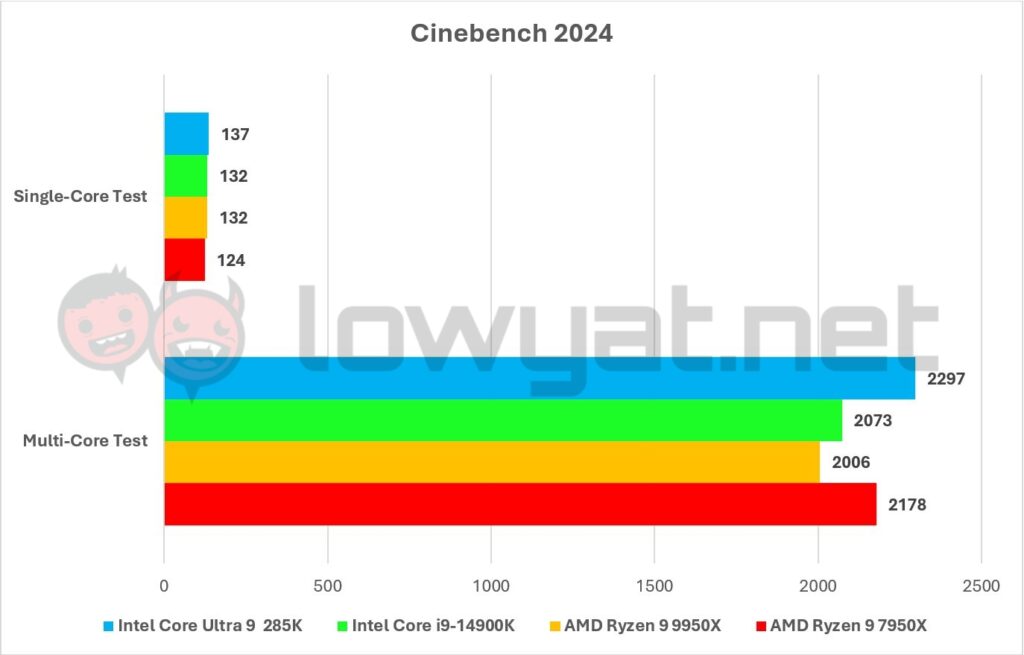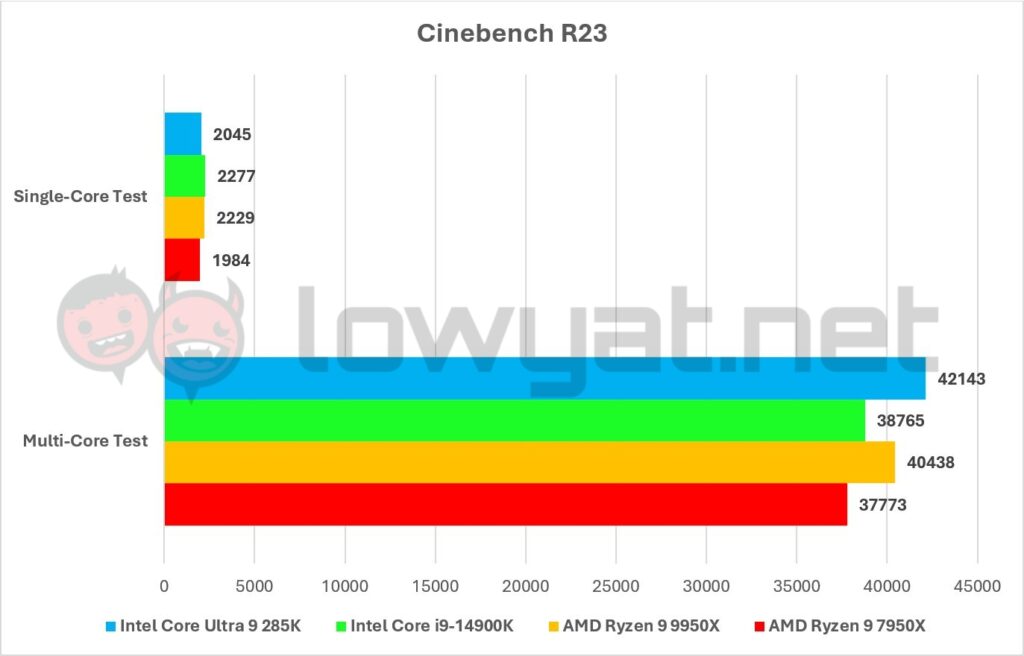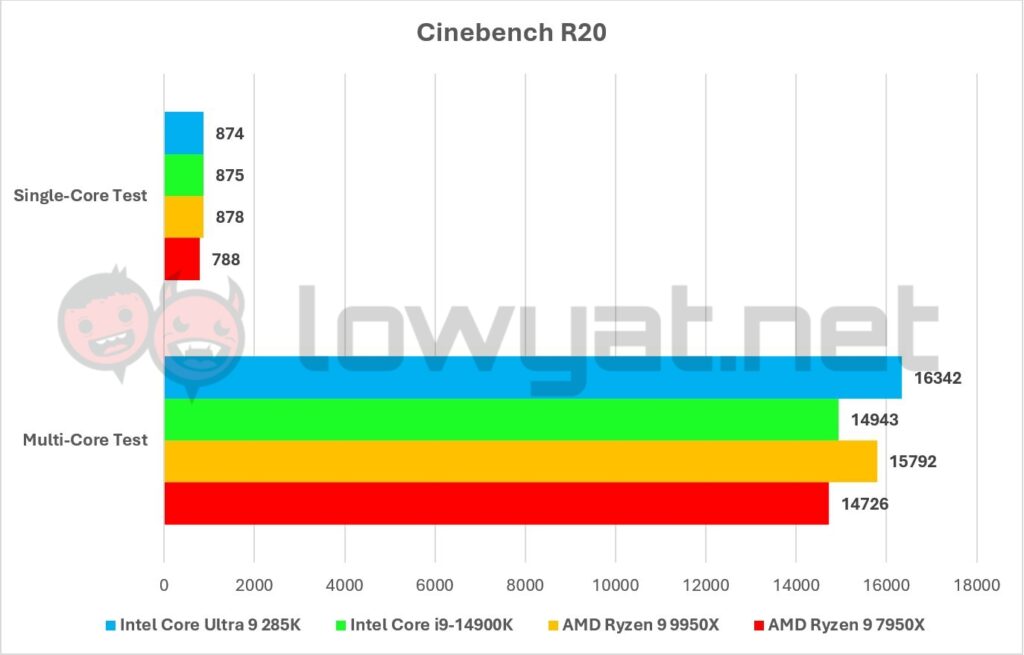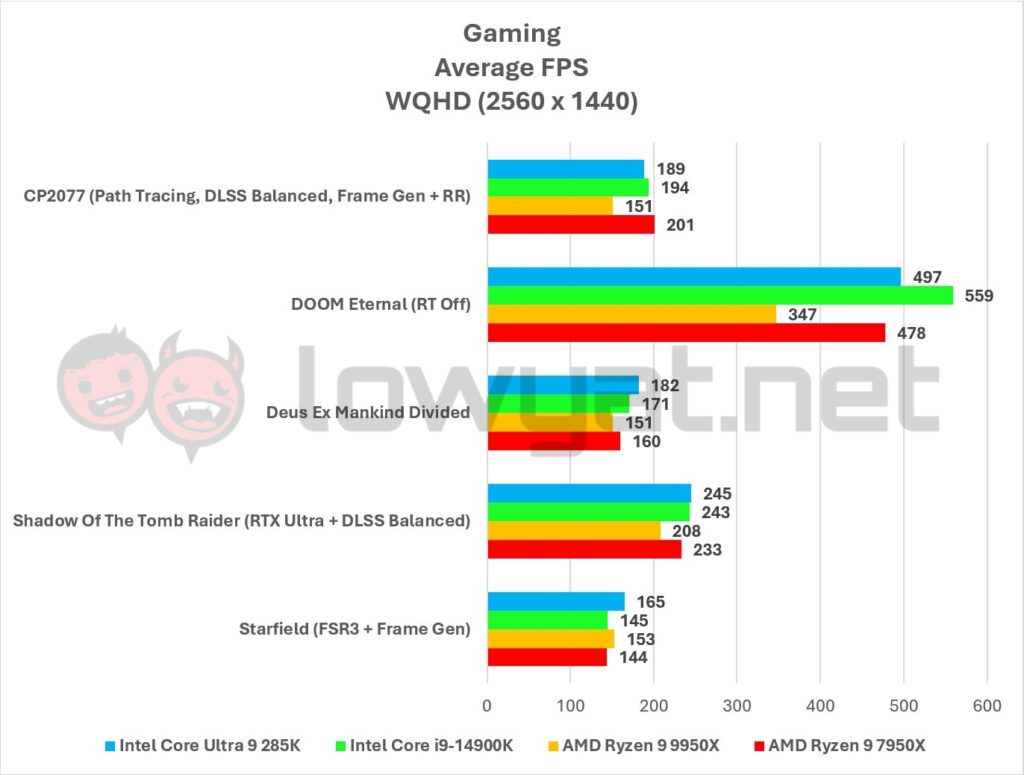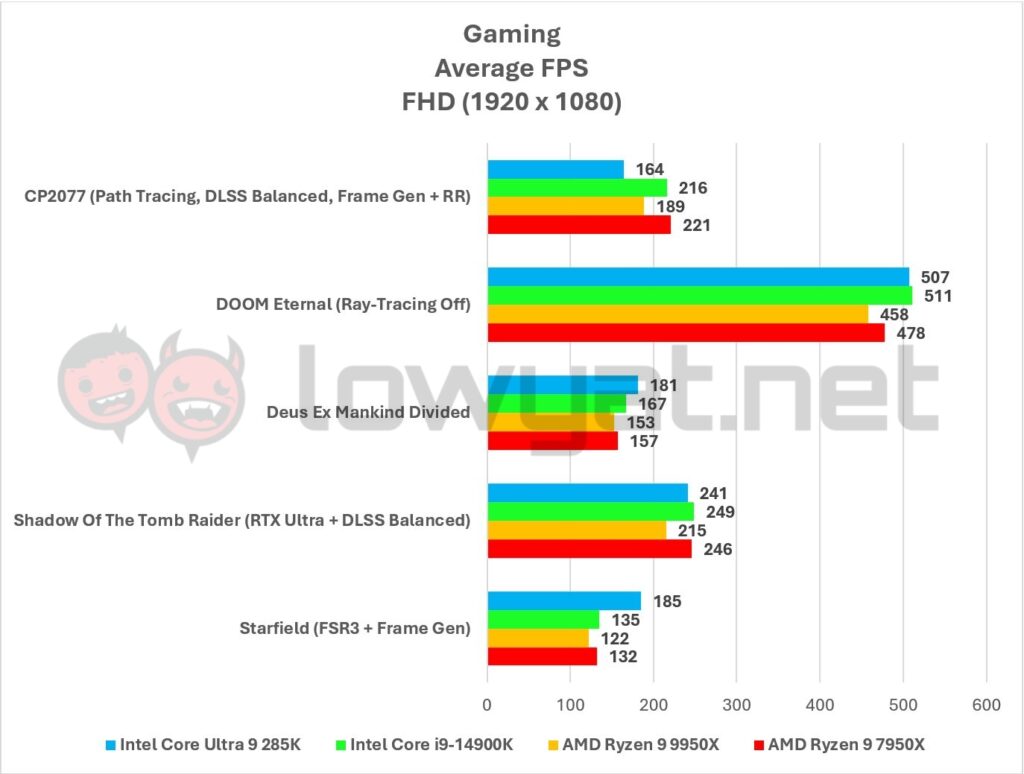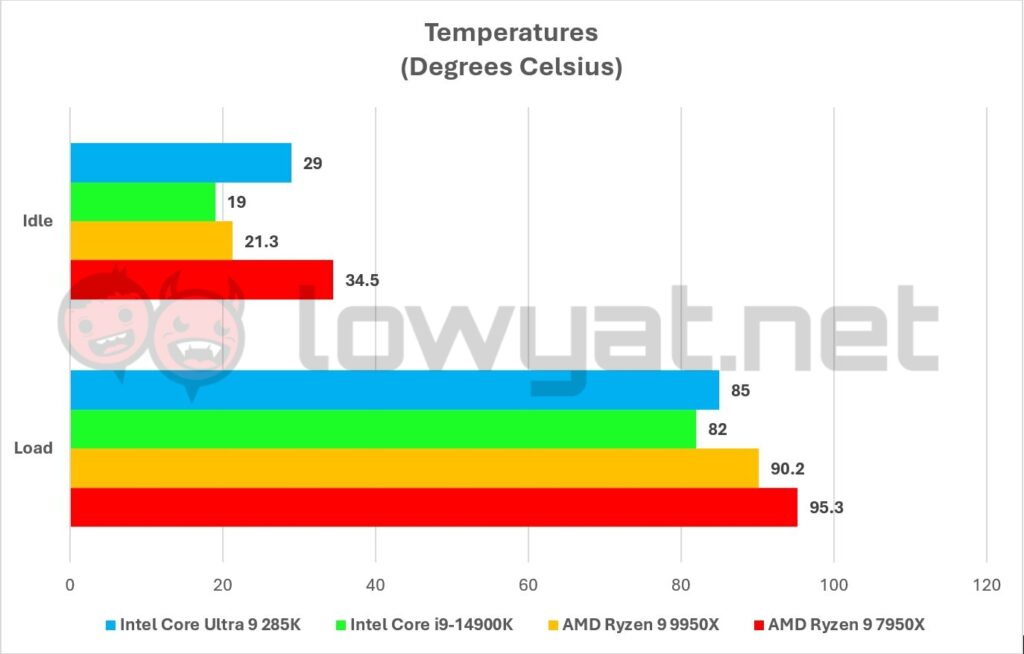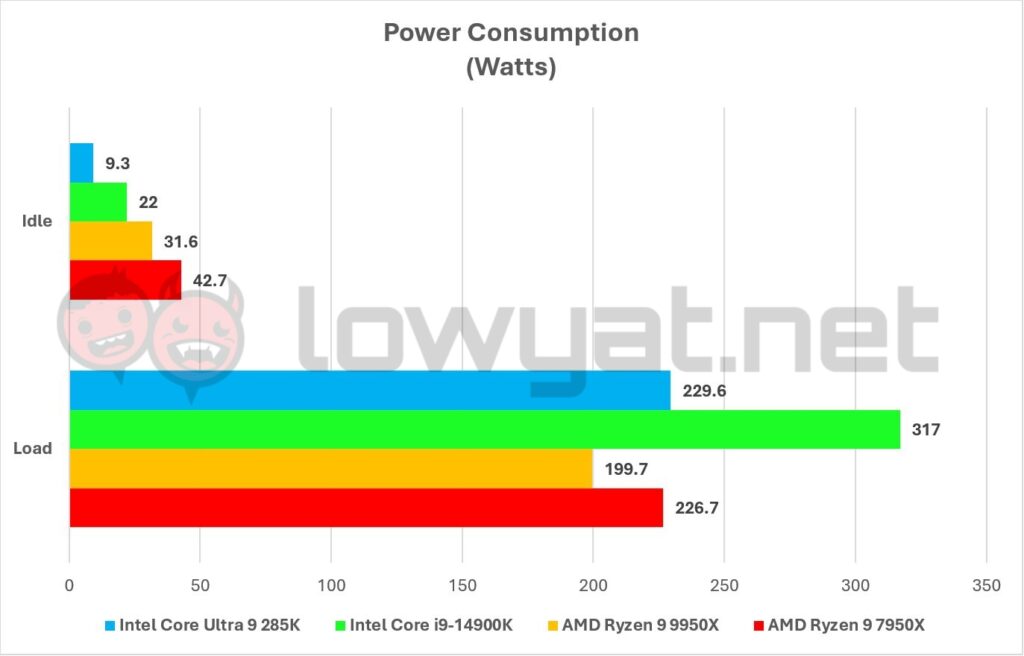After a lengthy process of U-turns and clown-car worthy issues, Intel finally managed to send over its top-tier, next-generation Arrow Lake-S desktop CPU, the Core Ultra 9 285K. Like so many processors in the roadmap, this new powerhouse processor is a first for the chipmaker – new architecture, new chipset, new design, and the first time a desktop CPU has been equipped with an NPU, giving it access to the technology flavour of the year: AI.
Specifications
With the specifications laid bare above, I’m just going to give another crash course – to the best of my ability, anyhow – on what makes Arrow Lake-S so special, compared to its predecessor. First of all, and one of the more important points of it, is the CPU marks Intel’s official departure from its long and most certainly, worn use of the monolithic architecture.
The Core Ultra 9 285K, as with all other Arrow Lake-S SKUs in the lineup, are built around the chipmaker’s “disaggregated” architecture, meaning that the processor die itself comprises multiple tiles. The architecture design goes back to the launch of Meteor Lake which launched last year. In this case, much of Arrow Lake-S’ architecture is derived from the more recent Lunar Lake mobile architecture.
Also important to note is that, like its laptop counterparts, the 285K and all Arrow Lake-S CPUs are assembled using Foveros, Intel’s advanced packaging technology that features low-power and high-density die-to-die connections.
Like Lunar Lake, though, the Arrow Lake-S series is also officially the first desktop CPU lineup to ditch Intel’s time-tested and long-used hyperthreading technology. The reason for this goes back to the launch of Lunar Lake – Intel promised better performance-per-watt with the new architecture, thanks in part to the process node’s ability to maintain a finer clock granularity.
NPUs finally arrive for Intel Desktop CPUs.
There is another first for the 285K and more specifically, the Arrow Lake-S lineup: the embedding of an NPU into the CPUs. Again, as I previously wrote, it’s a modified version of the Meteor Lake NPU, not Lunar Lake. And it has peak performance of 13 TOPS.
Testbench
One important thing that I need to note here is that, at the publication of this review, Intel had sent out a note to reviewers that our review units may not necessarily reflect the actual and final score of the consumer 285K when it becomes available. That being said, ASUS, who graciously provided the Z890 motherboard I needed to test the CPU, also provided me with a BIOS update that supposedly fixes the issue.
Out of an abundance of caution, however, I have also set the power mode on Windows to Best Performance, as per Intel’s request, given the supposed and ongoing issue with its Balanced Power Mode not yielding the performance metrics that it expects of the 285K, and all other Core Ultra 200S SKUs, at this point.
For comparison’s sake, I will be comparing the Core Ultra 9 285K and its performance to three other CPUs: its predecessor, the Core i9-14900K, AMD’s current powerhouse Ryzen 9 9950X, and its last-generation powerhouse, the Ryzen 9 7950X.
On a related note, I would like to point out that the motherboard ASUS has provided looks wicked. The ROG Maximus Z890 Extreme is obviously a top-end enthusiast-class board, and comes with all the bells and whistles you’d expect of a board that is likely to cost upwards of RM4,000. I am talking support for CUDIMM memory up to 9,200MT/s, Wi-Fi 7, PCIe 5.0, Thunderbolt 5 (obviously, being an Intel board). I mean, the works.
Heck, it’s even got a built-in LCD on the side that, by default, actively keeps me informed about the CPU’s voltage, temperature, as well as the amperes it is consuming. That, and this motherboard has a frak-ton of buttons and switches, all to facilitate overclocking at the literal press of a button and flip of the switch.
Benchmarks, Temperatures, And Power Consumption
So, let’s state the obvious here: the Core Ultra 9 285K is clearly no slouch. Be it for productivity or gaming, Intel’s latest highest-end desktop processor delivers performance levels similar to the previous generation Core i9-14900K. And before you get your panties all up in a bunch about that last part, allow me to explain it: as Intel’s expert told us during its presentation, one of the main goals of the chipmaker with the creation of Arrow Lake-S is an enhanced, hunkered down if you will, focus on the performance-per-watt.
Love it or leave it, the 14900K and other Raptor Lake-S Refresh CPUs were already powerful and, in essence, slightly more souped up versions of their respective 13th Gen counterparts. Seriously, hitting 6GHz at max boost? That’s not something to scoff at.
With Arrow Lake-S and the Core Ultra 9 285K, Intel has scaled back that maximum boost clock to a more manageable 5.7GHz but the main difference is, like its Lunar Lake mobile counterparts, there’s no hyperthreading involved. In other words, you’re looking at just eight Lion Cove P-Cores running at full whack, while drawing moderately less power than a 14900K.
The synthetic benchmarks portions of the test shows the 285K pretty much ripping through the tests without so much as a hitch, either matching or beating out the 14900K. The same can also be said, by the way, of its performance against AMD’s own Ryzen 9 9950X, although the two of them do look like they’re having a battle of supremacy.
When it comes to gaming, the 285K clearly begins showing off the performance matching Intel promised – it either comes close or falls short of the average frames of the 14900K but clearly, it isn’t struggling to maintain those framerates. Simply put, the differences are negligible. Likewise, the same can be said about the processor’s operating temperature although it certainly does run significantly cooler than the Ryzen 9 9950X.
But the piece de resistance of Arrow Lake-S or the Core Ultra 9 285K is, as per Intel’s promise once again, better thermal efficiency and performance-per-watt. Compared to the 14900K, the new Arrow Lake-S powerhouse draws 100W less on average, while keeping up with its predecessor.
Conclusion
At US$589 (~RM2,563) a pop, the Core Ultra 9 285K is, as always, one expensive CPU but then again, what flagship SKU doesn’t cost a proverbial arm and a leg.
Like its predecessor, though, the 285K is undoubtedly a part of a trend that seems to be Intel’s shtick since the 13900K: offering similar level of performance, generation on generation. With the 14900K, that power came in the form of 6GHz raw performance. With this year’s model, it’s better thermals and lower power consumption, to a significant degree at least.
The one trump card that the 285K and Arrow Lake-S has over the previous generation Raptor Lake-S, is protection from the dread Vmin Shift vulnerability that plagued 13th and 14th Gen processors.
On the whole, there is, mercifully, nothing inherently wrong with Arrow Lake-S and as such, I can recommend Intel’s latest powerhouse CPU. Just be prepared to fork at a prince’s ransom if you’re going to build a top-tier system.
Follow us on Instagram, Facebook, Twitter or Telegram for more updates and breaking news.


